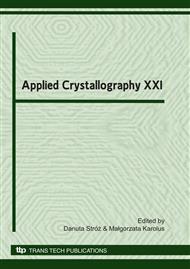p.93
p.97
p.101
p.106
p.110
p.114
p.118
p.123
p.127
Microstructure Formation in Austenitic Steel after Compression with Oscillatory Torsion Test
Abstract:
Different techniques have been used to introduce large strains into metals, for example torsion under pressure (HPT), cyclic extrusion compression (CEC), equal channel angular extrusion (ECAE), or accumulative roll bonding (ARB). Recent investigations are focused on analyzing new and alternative techniques for introducing severe plastic deformation (SPD) and to compare SPD techniques in terms of grain refinement and enhancement of properties. Compression with oscillatory torsion was applied to 0H18N9 austenitic steel to achieve a large strains. The microstructure was characterized using transmission electron microscopy (TEM), scanning electron microscopy (SEM) and electron backscatter diffraction (EBSD). Formation of deformation twins and shear bands are responsible for the structure refinement in materials with low stacking fault energies (SFEs) such as austenitic steel. The investigations revealed, that nano-sized grains of 0H18N9 steel after processing by compression with oscillatory torsion are found in three different types of regions.
Info:
Periodical:
Pages:
110-113
Citation:
Online since:
June 2010
Authors:
Price:
Сopyright:
© 2010 Trans Tech Publications Ltd. All Rights Reserved
Share:
Citation:


